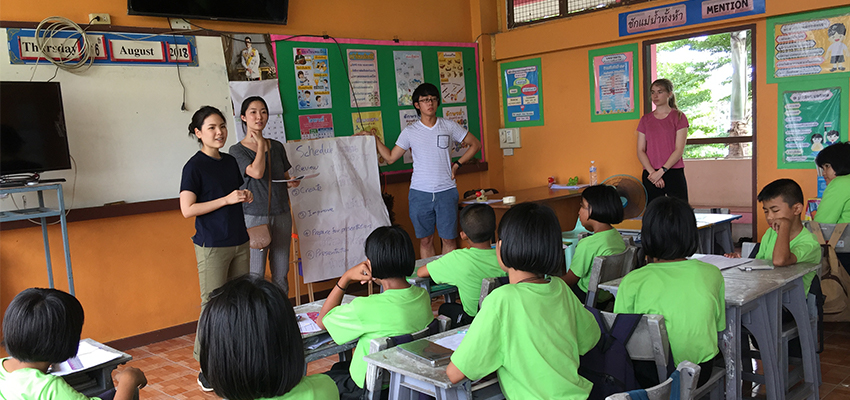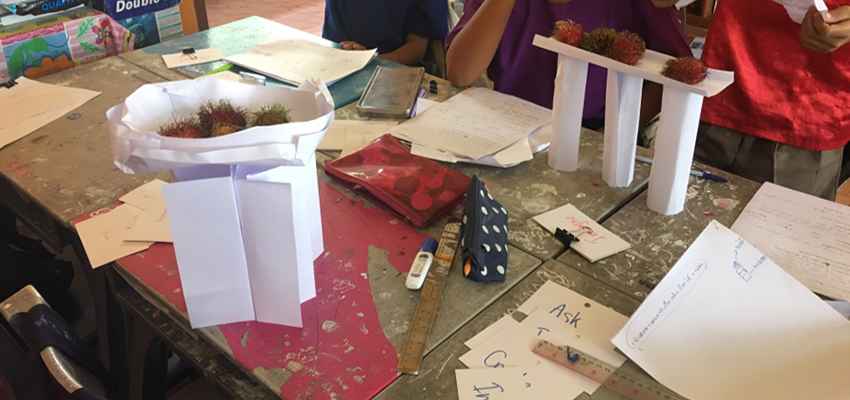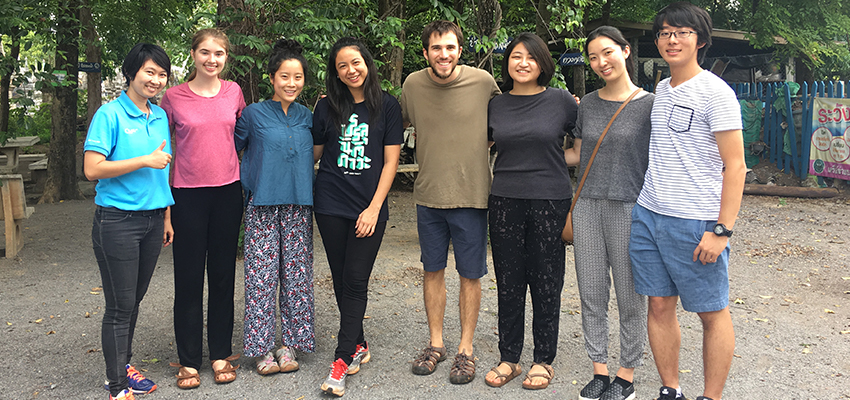
Last semester in EC.717 (D-Lab: Education and Learning), I learned the formal design process for the first time. The design process is creative, messy, and ever-cycling. There is no one right way to do it; actually, the more unconventional, the more the chance of a radical, innovative idea. I was excited at the thought of becoming equipped to teach this process at our D-Lab partner school, the Wat Dam Rong Boon School, in Thailand.
That summer, I stood before my class of 5th-graders in Lopburi, Thailand. This was their first exposure to the formal design process, not unlike my first exposure the previous semester. And now I was considered qualified to teach?
When teaching, all the educational terminology fell away as theory became practice — and practice is much messier — but much truer to the spirit of design. I could only hope I had absorbed a sufficient amount of information during the semester that it would come out naturally during teaching.
But the information did not come out naturally.Reciting the “Five E’s of Education” or designing each lesson around “Bloom’s Taxonomy” can in no way prepare for the act, or more fittingly, the art of teaching. I had to carefully think of each word I said. What was the best way to teach a seemingly abstract process like design? What phrasing would be best for the translator to receive and translate into a Thai word the students could understand? How could I inspire the students to think thoughts they’ve never thought before? How could I continuously adapt my teaching style to meet the needs of the varied class of 27 students?
Teaching involves a tremendous amount of spontaneous decision-making. Some decisions are spot-on — others, not so much. But my co-teachers and I learned right along with the students. We utilized the design process in our lesson planning and teaching just as much as we hoped the students engaged with the design process in their projects. I gained so much valuable experience on how to teach!
I am thoroughly amazed at the students’ creativity. With limited time, minimal direct communication, and basic material resources (paper cups, straws, paper, plastic water bottles, cardboard, etc), they were able to manifest their inner creativity in 3D realities.
During the first week, we presented a different engineering challenge each day. The second week, the students chose a problem in their school for which they ideated solutions and built a prototype. Group sizes were always between one and four students. They created many wonders and excelled at collaboration.

The design process is important in establishing a flow for problem-solving. It is about Creation. To Create. To be Creative. To make something new that did not previously exist! What a privilege to use our minds and hands and engage in creative processes that have been around since the foundation of the world, since the Earth was Created! What a privilege to witness the creative spirit of the students!
I was particularly inspired by a group that chose to build a design that would not work for one of the daily challenges. (We had asked them to ideate solutions that would not work and then solutions that would work). One of our goals was helping the students see that failure in the design process is expected and okay. This group seemed completely content with not having immediate success. Perhaps in constructing an ineffective solution, they were better able to hypothesize about what would actually work. Perhaps sometimes you don’t know what to do until you know what not to do.
Teaching is so complex and really does take a dose of supernatural energy. Thanks to this trip, I developed a greater respect and love of teaching. D-Lab classes are an amazing way to see design in action, no experience necessary! The principles of design are also completely transferable to meeting everyday challenges in one’s own life. I hope to practice creativity daily as a result of this experience.
Many thanks to our supporters in America: MIT D-Lab, and Thailand: Darunsikkhalai School for Innovative Learning (DSIL) and Betagro Public Company Ltd!

Zion Perry is a bioengineering student in the MIT Class of 2020. She enjoys seeing how design thinking and creativity intersect biology, education, and really all areas of life!

